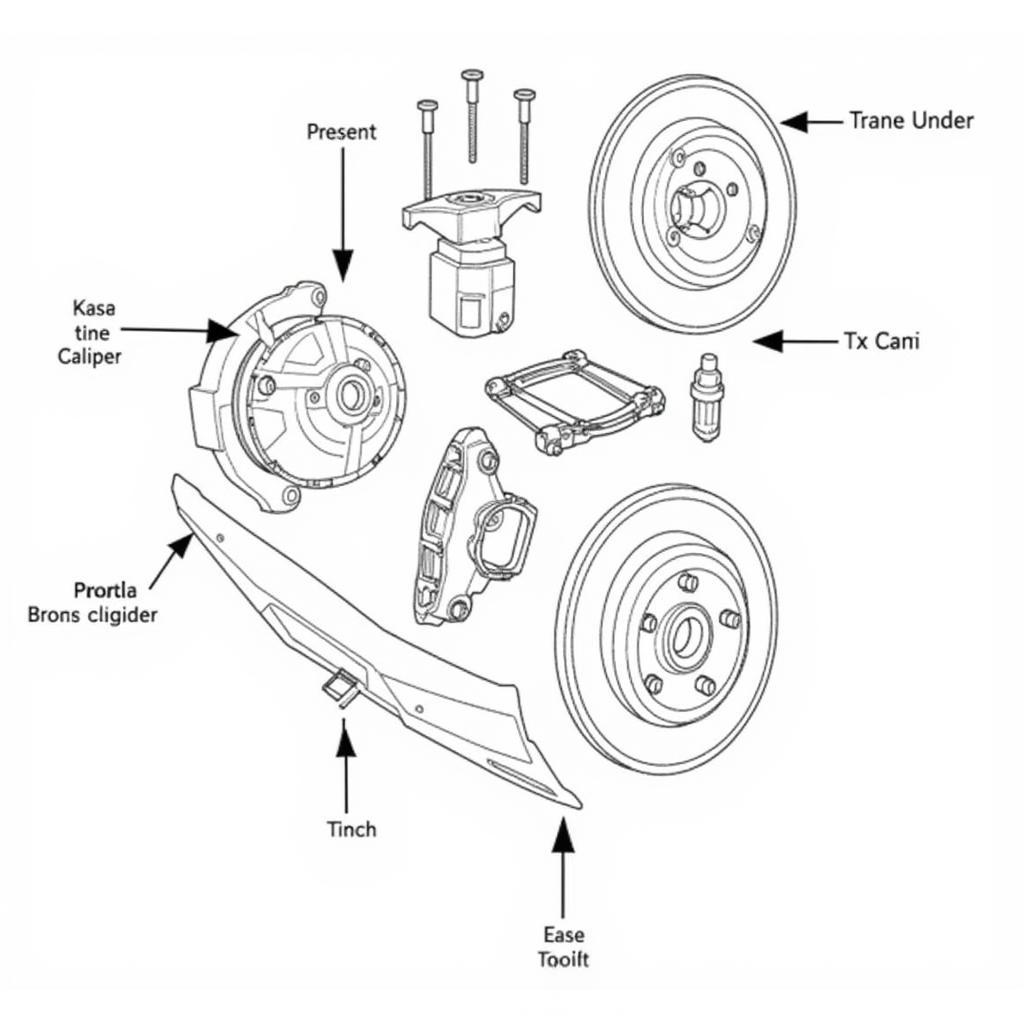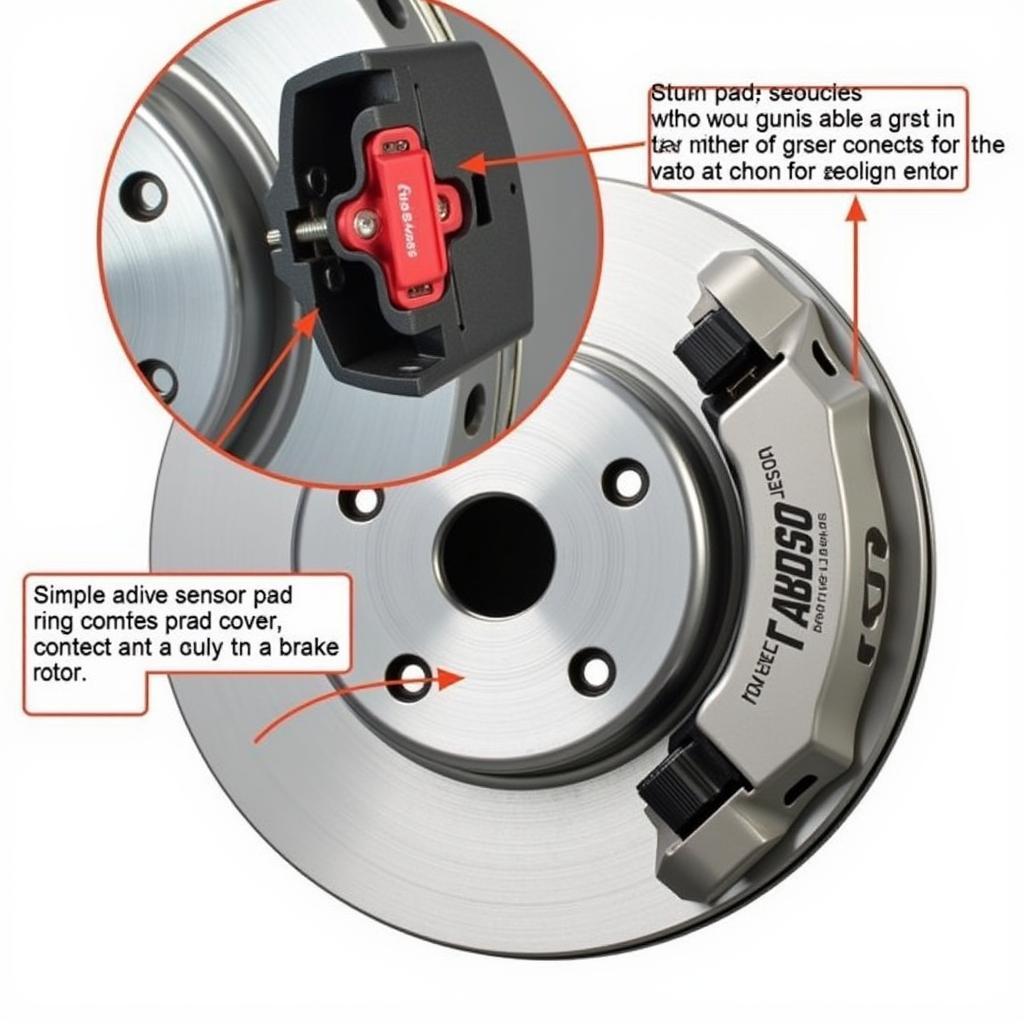Your 2008 Dodge Durango’s brake warning light is on, and you’re not sure what to do. You might be worried about safety, wondering what’s wrong, and how much it will cost to fix. This article will help you understand the reasons behind this warning light, how to diagnose the problem, and potential solutions.
What Does the Brake Warning Light Mean?
The brake warning light, often a red exclamation mark inside a circle, indicates a problem with your vehicle’s braking system. It’s not just a minor annoyance; it signals a potential safety hazard. Ignoring it could lead to serious consequences, so it’s crucial to address the issue promptly.
Common Causes of the Brake Warning Light
Several issues can trigger the brake warning light in your 2008 Dodge Durango. Here are some of the most common culprits:
Low Brake Fluid:
This is often the simplest and most common reason for the brake warning light. Brake fluid lubricates the brake system and helps transmit pressure to the calipers. When fluid levels drop below a certain threshold, the warning light illuminates.
How to Check:
- Locate the Brake Fluid Reservoir: It’s typically a small, transparent container with a clear level indicator. Consult your owner’s manual for the exact location.
- Check the Fluid Level: Make sure the fluid level is within the “Full” markings on the reservoir.
- Top Up if Needed: If the level is low, carefully add brake fluid of the correct type.
[quote|John Smith|Experienced Mechanic| “Low brake fluid is a common issue and usually easy to resolve. However, if you notice a sudden drop in fluid level, it might indicate a leak, which needs professional attention.”]
Brake Pad Wear:
Brake pads are designed to wear down over time. As they wear, the sensor embedded in them triggers the warning light to inform you that it’s time for a replacement.
Signs of Worn Brake Pads:
- Squealing or Grinding Noises: You might hear a high-pitched squealing sound when applying the brakes.
- Increased Braking Distance: It may take longer to stop your vehicle compared to before.
- Vibration During Braking: You might feel a vibration in the brake pedal or steering wheel.
Brake System Malfunction:
The brake warning light can also illuminate due to a malfunction within the brake system, such as:
- ABS (Anti-lock Braking System) Problems: A failure in the ABS system could trigger the warning light.
- Brake Pressure Sensor Issues: If the sensor responsible for monitoring brake pressure fails, it can lead to an erroneous warning.
- Electrical Short or Connection Problems: A short circuit or loose connection within the braking system’s electrical wiring can cause the light to illuminate.
[quote|Susan Jones|Automotive Technician| “If the brake warning light comes on and is accompanied by other symptoms, like a spongy brake pedal or difficulty braking, it’s essential to have the vehicle inspected by a qualified mechanic immediately.”]
Troubleshooting Tips:
- Check for Low Brake Fluid: If the brake fluid level is low, top it up and see if the warning light goes off.
- Inspect Brake Pads: If the brake pads are worn, replace them.
- Scan for Codes: Use an OBD-II scanner to check for any diagnostic trouble codes (DTCs) related to the braking system.
- Professional Inspection: If you’re unable to resolve the issue yourself, take your vehicle to a qualified mechanic for a comprehensive inspection.
Important Note:
The brake warning light is a serious indicator of a potential problem. Never ignore it. If the light comes on, have your vehicle inspected as soon as possible.
FAQ
Q: How often should I check my brake fluid?
A: It’s recommended to check your brake fluid levels at least once a month, especially if you notice the warning light coming on.
Q: What does a spongy brake pedal feel like?
A: A spongy brake pedal feels soft and mushy when you press it, instead of firm and responsive.
Q: Can I safely drive my car with the brake warning light on?
A: It’s best to avoid driving with the brake warning light on, as it indicates a potential braking issue.
Q: How much does it cost to fix a brake warning light?
A: The cost of fixing the brake warning light can vary significantly depending on the cause of the problem. A simple fluid top-up might cost only a few dollars, while a major repair could cost hundreds.
Conclusion:
The brake warning light in your 2008 Dodge Durango is a serious indicator that requires immediate attention. By understanding the possible causes and troubleshooting steps, you can address the issue promptly and ensure your vehicle’s safety. Remember, if you’re unsure about any aspect of the diagnosis or repair process, it’s always best to consult a qualified mechanic.


